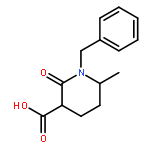Co-reporter:Alexander S. Henderson, John F. Bower and M. Carmen Galan
Organic & Biomolecular Chemistry 2016 vol. 14(Issue 17) pp:4008-4017
Publication Date(Web):31 Mar 2016
DOI:10.1039/C6OB00368K
Carbohydrate derivatives are readily available chiral molecules, yet they are infrequently employed as enantioinduction components in stereoselective catalysis. In this review, synthetic approaches to carbohydrate-based ligands and catalysts are outlined, along with example applications in enantioselective catalysis. A wide range of carbohydrate-based functionality is covered, and key trends and future opportunities are identified.
Co-reporter:Alexander S. Henderson, Sandra Medina, John F. Bower, and M. Carmen Galan
Organic Letters 2015 Volume 17(Issue 19) pp:4846-4849
Publication Date(Web):September 17, 2015
DOI:10.1021/acs.orglett.5b02413
A general and practical route to carbohydrate–aryl ethers by nucleophilic aromatic substitution (SNAr) is reported. Upon treatment with KHMDS, C–O bond formation occurs between carbohydrate alcohols and a diverse range of fluorinated (hetero)aromatics to provide the targets in good to excellent yields. Commercially available arylating agents, high atom economy, and high regioselectivity are notable features of the protocol. The aryl ether products have potential for wide-ranging applications as exemplified by the synthesis of a novel chiral P,N-ligand.
Co-reporter:Alexander S. Henderson, John F. Bower and M. Carmen Galan
Organic & Biomolecular Chemistry 2016 - vol. 14(Issue 17) pp:NaN4017-4017
Publication Date(Web):2016/03/31
DOI:10.1039/C6OB00368K
Carbohydrate derivatives are readily available chiral molecules, yet they are infrequently employed as enantioinduction components in stereoselective catalysis. In this review, synthetic approaches to carbohydrate-based ligands and catalysts are outlined, along with example applications in enantioselective catalysis. A wide range of carbohydrate-based functionality is covered, and key trends and future opportunities are identified.






![Acetamide, N-[2-(2-phenylethyl)phenyl]-](http://img.cochemist.com/ccimg/54900/54888-53-8.png)
![Acetamide, N-[2-(2-phenylethyl)phenyl]-](http://img.cochemist.com/ccimg/54900/54888-53-8_b.png)













